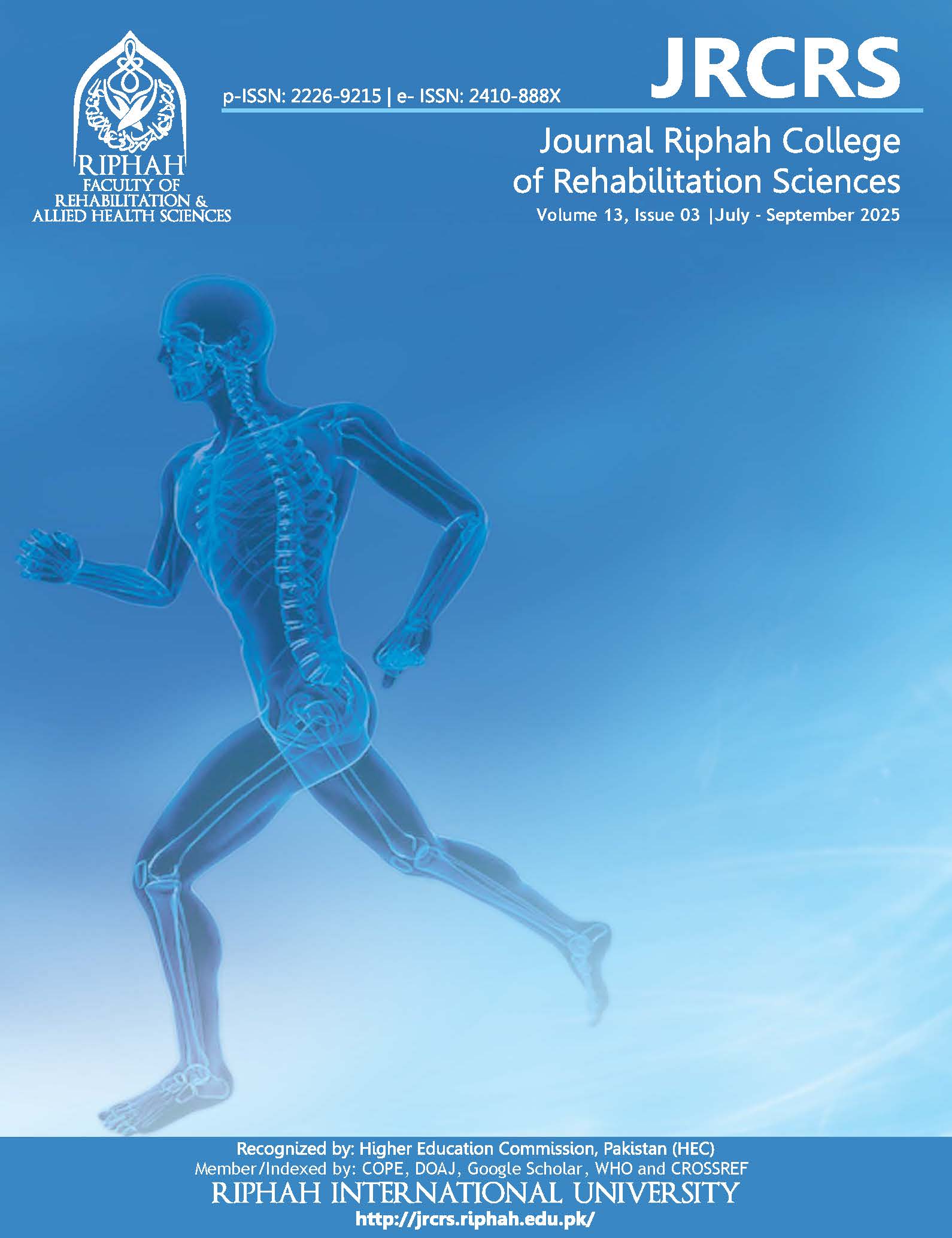Comparison of Kinesiology Taping and Instrument Assisted Soft Tissue Mobilization in Cervicogenic Headache: A Randomized Clinical Trial
Keywords:
Cervicogenic headache, range of motion, mobilization, unilateral headache, cervical atlasAbstract
Abstract:
Background: Cervicogenic headache is a common condition caused by issue in the cervical spine, leading to chronic head pain. Various treatments exist, including kinesiology Taping and Instrument Assisted Soft Tissue Mobilization, but there is limited evidence comparing their effectiveness.
Objective: In this study, the effects of instrument-assisted soft tissue mobilization and kinesiology taping on pain severity, range of motion, and functional status in individuals with cervicogenic headache were compared.
Methodology: In the physiotherapy department of Healing Hands Institute, Mega Medical Complex, Rawalpindi, 36 participants with clinically diagnosed cervicogenic headache, headache, and stiffness in the neck, positive flexion rotation test with restriction of 6-10 degrees unilateral headache, aged 30-44 years, were divided into two equal groups for a
clinical experiment that was randomized. While Group B received conventional therapy together with Instrument Assisted Soft Tissue Mobilizations (IASTM), Group A received conventional treatment along with Kinesiology Taping. Using a non-probability purposeful sampling approach, data was gathered at baseline and the fourth week to measure the
indicator using the Numeric Pain Rating Scale, Neck Disability Index, and Bubble Inclinometer. SPSS version 22 was used for data analysis. (CTR : NCT05474612)
Results: At 4 weeks of intervention, both groups A and B saw substantial improvements in disability, range of motion, and discomfort (p < 0.05). Although there were no statistically significant differences in cervical flexion, extension, left lateral flexion, or left rotation (p > 0.05), between-group analysis revealed statistically significant differences in NPRS, NDI,
cervical right rotation, and cervical right lateral flexion (p < 0.05). In the case of within-group comparisons, all measures showed statistically significant changes (p < 0.05).
Conclusion: The study concludes that the use of both instrument-assisted soft tissue mobilization and kinesiology taping has been successful in improving range of motion and lowering pain and impairment. However, Group B (Instrument Assisted Soft Tissue Mobilization) had a more notable improvement.
Keywords: Cervical Atlas, Cervicogenic Headache, Headache Unilateral, Mobilization, Range of Motion.
Downloads
Published
How to Cite
Issue
Section
License
Copyright (c) 2025 All Articles are made available under a Creative Commons "Attribution-NonCommercial 4.0 International" license. (https://creativecommons.org/licenses/by-nc/4.0/). Copyrights on any open access article published by Journal Riphah college of Rehabilitation Science (JRCRS) are retained by the author(s). Authors retain the rights of free downloading/unlimited e-print of full text and sharing/disseminating the article without any restriction, by any means; provided the article is correctly cited. JRCRS does not allow commercial use of the articles published. All articles published represent the view of the authors and do not reflect the official policy of JRCRS.

This work is licensed under a Creative Commons Attribution-NonCommercial 4.0 International License.







